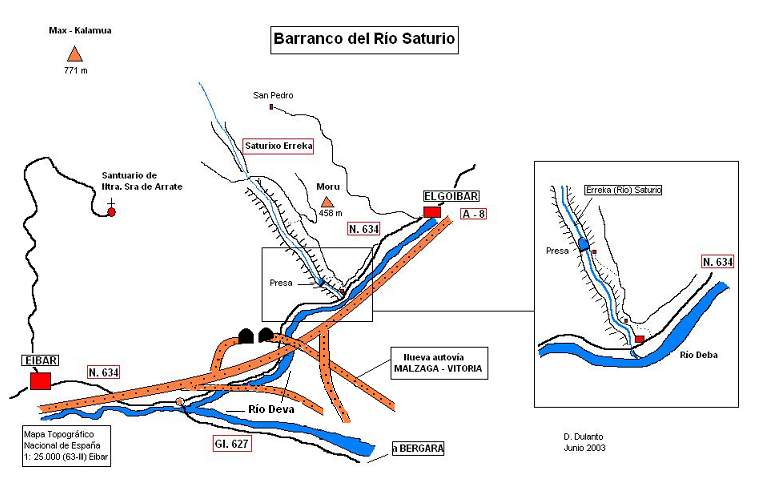Saturio
| Rating: | |||||||||||||||||||||||||||||||
|---|---|---|---|---|---|---|---|---|---|---|---|---|---|---|---|---|---|---|---|---|---|---|---|---|---|---|---|---|---|---|---|
| | Raps:max ↨98ft
Red Tape: Shuttle:None | ||||||||||||||||||||||||||||||
| Location: | APPROXIMATE LOCATION! "°12'57.00"N" can not be assigned to a declared number type with value 43."°24'46.00"W" can not be assigned to a declared number type with value 2.
|
||||||||||||||||||||||||||||||
| Condition Reports: | |||||||||||||||||||||||||||||||
| Best season: | Anytime
|
||||||||||||||||||||||||||||||
| Regions: | |||||||||||||||||||||||||||||||
Introduction[edit]
Approach[edit]
Desde el cruce de la N-634 con la GI-627, en el paraje llamado Maltzaga/Malzaga, situado a 2 km del municipio de Eibar. Seguir la N-634 en dirección a Elgoibar. A 1 km de este punto el río Saturio desemboca por la orilla izquierda orográfica en el río Deva. Desde este punto se coge un pequeño camino junto a la casa que está junto al río y se sube luego por una buena pista que discurre junto al río. En un momento la pista cruza el barranco, y este punto es el comienzo del mismo.
Descent[edit]
Barranco excavado en roca volcánica (ofítas). De caracter abierto con grandes rampas y algunas verticales. Puede recoger mucha agua. Vegetación abundante en las orillas que no molesta en absoluto durante el descenso
Exit[edit]
Inmediato. El río termina en la N-634
Red tape[edit]
Beta sites[edit]
 Barranquismo.net : Saturio
Barranquismo.net : Saturio Wiki-Infobarrancos : Barranco Saturio (http://infobarrancos.es/)
Wiki-Infobarrancos : Barranco Saturio (http://infobarrancos.es/)
Trip reports and media[edit]
Background[edit]
Primer descenso conocido. A. Requero, J. Lapresa, D. Dulanto en Junio del 2003.
